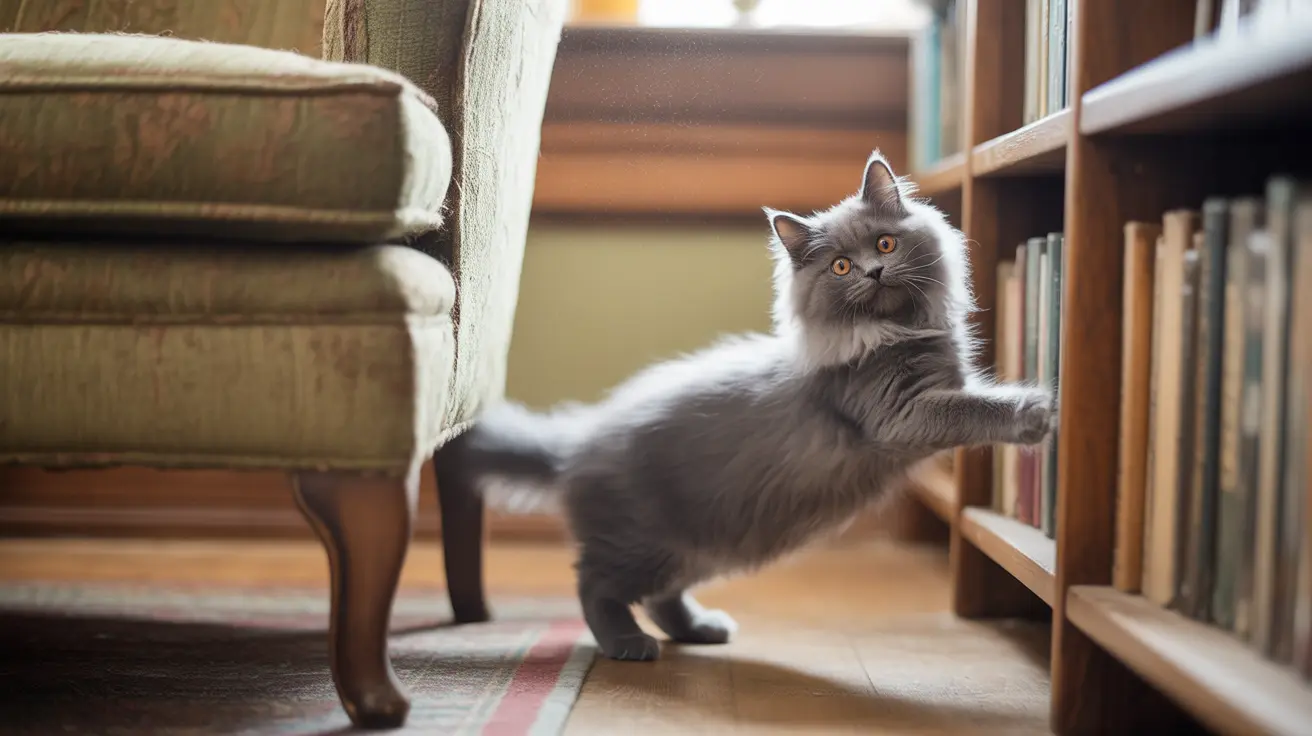The Unique Anatomy That Makes It Possible
Remarkable Shoulder and Collarbone Structure
Unlike humans, cats' shoulder blades are attached to their bodies primarily by muscles rather than bone connections. Their collarbones are small and floating, not rigidly connected to other bones. This unusual arrangement allows cats to compress their shoulders and chest area, essentially making their body as narrow as their head when necessary.
The Super-Flexible Spine
A cat's spine contains up to 53 vertebrae - significantly more than humans' 33 vertebrae. These vertebrae are connected by elastic discs and loose ligaments, enabling cats to rotate their bodies up to 180 degrees side-to-side, while humans are limited to about 90 degrees. This exceptional spinal flexibility is key to their ability to squeeze through narrow spaces.
The Role of Whiskers in Space Navigation
Cats' whiskers serve as sophisticated space-measurement tools. These sensitive tactile hairs help cats determine whether they can fit through an opening before attempting to squeeze through. Connected to numerous nerve endings, whiskers provide instant feedback about spatial dimensions and potential obstacles.
When a cat approaches a tight space, their whiskers act like natural measuring devices, helping them gauge whether their body will fit through the opening. This prevents them from getting stuck in spaces that are truly too small for them.
Why Cats Seek Small Spaces
The tendency to squeeze into small spaces isn't just about physical capability - it's deeply rooted in feline instinct. Small, enclosed spaces provide cats with a sense of security and comfort. In the wild, this behavior helped protect them from predators and allowed them to hunt prey in tight spaces.
Modern house cats maintain this instinct, which explains their attraction to boxes, drawers, and other snug spots around your home. These confined spaces create a sense of safety and help reduce stress, particularly in unfamiliar or overwhelming environments.
Frequently Asked Questions
How do cats' shoulder blades and collarbones help them fit into small spaces?
Cats' shoulder blades are attached by muscles instead of bone, and their collarbones are small and floating. This unique structure allows them to compress their chest area and squeeze through openings barely wider than their heads.
What role do whiskers play in a cat's ability to squeeze through tight openings?
Whiskers act as sophisticated spatial sensors, helping cats determine whether they can fit through an opening before attempting to pass through. These sensitive hairs provide immediate feedback about space dimensions and potential obstacles.
Why can cats twist and bend their bodies more than humans to get into narrow spots?
Cats have highly flexible spines with more vertebrae than humans, connected by elastic discs and loose ligaments. This allows them to rotate their bodies up to 180 degrees, compared to humans' 90-degree limitation.
How does a cat's flexible spine contribute to its agility and ability to enter small spaces?
A cat's spine contains up to 53 vertebrae with elastic connections, allowing for extreme bending and twisting. This spinal flexibility enables them to contort their bodies into various shapes and squeeze through tight spaces.
Why do cats prefer hiding in small, confined areas for comfort and safety?
Cats instinctively seek small spaces because they provide a sense of security and protection. This behavior is rooted in their evolutionary past, where finding tight spaces helped them avoid predators and stay safe while resting.
Conclusion
The remarkable ability of cats to squeeze into small spaces is a testament to their unique evolutionary adaptations. From their flexible spine to their specialized shoulder structure and sensory whiskers, every aspect of their anatomy works together to enable this fascinating capability. Understanding these features helps us appreciate why our feline friends are such masters at finding and fitting into the coziest spots in our homes.






